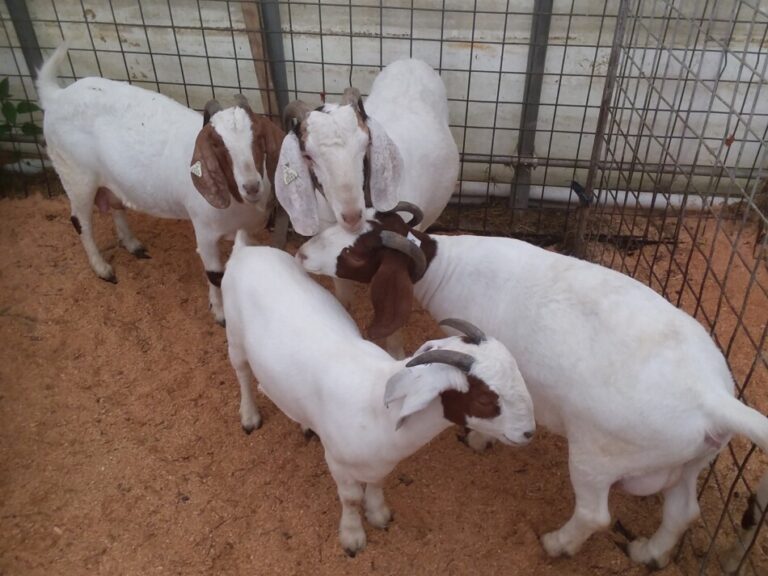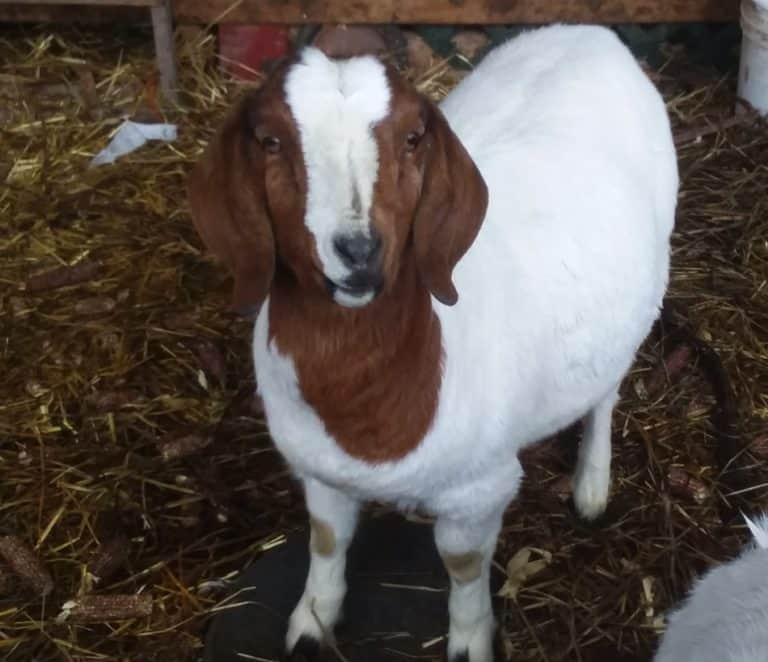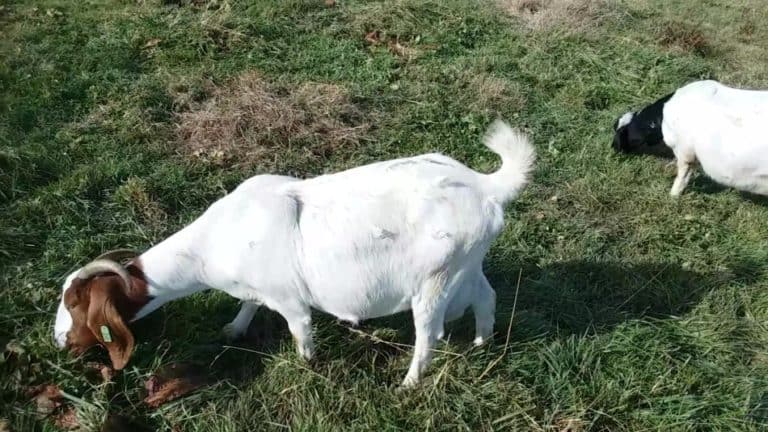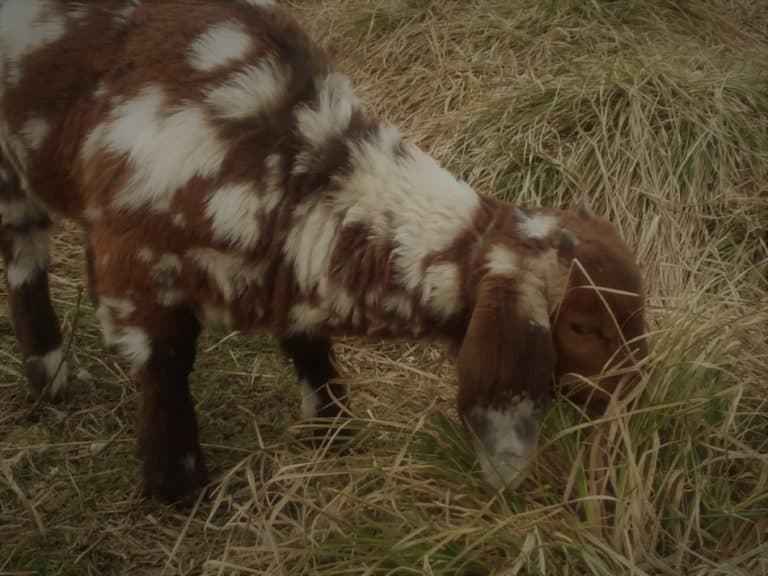Thinking Of Getting Into Meat Goats? Costs Of Getting Started

| Need to purchase | Cost |
| High quality breeding does | $300-400 each |
| High quality meat buck | $500-600 |
| Hay (no grain) dewormer, mineral | $77 per adult goat |
Thinking of getting a starter herd of meat goats? We are as well!
Since we want this to be a small business, we need to figure up the costs and returns for raising goats in our area.
To get started in meat goats, you should expect to pay $300-$400 for a high quality proven commercial doe and around $500-600 for a high quality proven commercial buck.
Our main income is from sheep, so, for us, the goats would have to fit with (not compete against) the sheep operation. This does not have to be the case for you, of course.
Goats and lamb seem to be rising in popularity with growers and eaters so this is definitely an area we are seriously looking to expand into.
Goats or Sheep: Which one is right for you? walks you through figuring out which one you should raise.
Goats would use the same facilities as the sheep and could be put with them on pasture to eat some of the plants the sheep and cattle are currently leaving behind.
Right now we are in the scoping it out stage-looking around seeing what is available and for what price.
I’ve seen some animals that we would love to have and I’ve seen some that I’m glad I don’t have.
We are looking mainly at meat breed crosses in order to keep the prices at a profitable level and to get the extra hardiness that always comes with a hybrid (mix breed).
Wondering what goat breeds are available? Read 14 Common Goat Breeds.
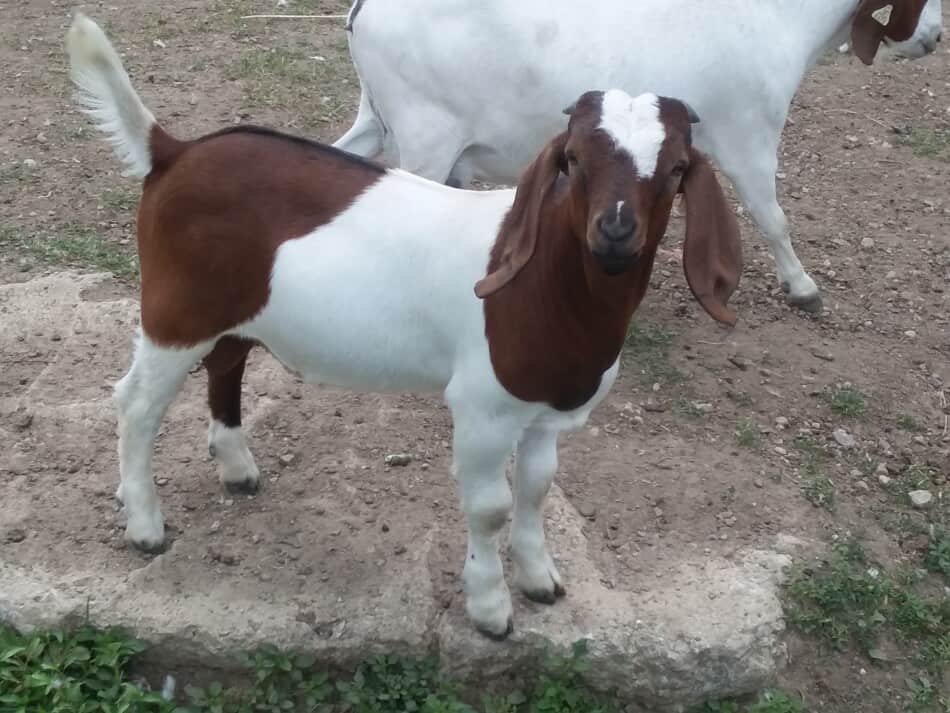
Choose good goats to start your herd
The main question here is what goats to start with and where to get them?
Know the purpose of your goat herd
You need to know the main purpose of your goat herd before you look into buying any goats. What do I mean by that? I mean what are you planning to do with your goats?
Do you want scrappy goats that can eat brambles and brushy growth and grow well? Or are you planning on providing the feed to your goats and you just want to raise a really meaty market kid to sell?
In my experience, those are two very different body types of goats! Speaking in general terms the first type, the brush eater, would be more of a Kiko type goat and the meaty market kid producer would be more of a Boer type goat.
Which type of goats do you plan to raise? Which goat will fit your area better?
In my area, the Boer type goats sell better, but need substantial feed to grow to market size, whereas the Kiko types are more economical to raise but do not sell as well.
Buy goats from a farm or breeding stock sale
A sound plan is to get your starter herd straight from a farm or go to a breeding stock sale. Both these sources should give you higher quality goats to start with.
You will get more help, as in a person to call when you have a question, if you get your does straight from a breeder, but not so with a breeding stock auction.
Do not buy your goat herd from an auction
Going to the regular or weekly auction and just picking up the animals that go through the sale that day is a bad idea, those are culls.
A cull is an animal that is not productive any more or did not breed when the rest of the group did.
Either way, these goats are not returning the current owner money, so why would you want to bring home goats that will only waste your money?
Choose high quality does
Once you have some ideas of where to get your goats, how do you spot a good one? You want high quality does. Let’s get into what a high quality doe looks like.
A high quality doe is reliable and profitable
A high quality doe mean a doe that will produce well for you and be an easy keeper.
You need a doe that will breed every year, give birth to and raise her babies and keep herself in good condition. This is a doe that will make you money.
Notice there is no mention of color or specific markings. Pretty or cute markings with special colored eyes does not pay, marketable, easy care, fast growing goat kids are what will pay.
High quality does can be crossbred does
This does not mean that she is a purebred, although it could.
High quality means that she will do her job, be a reasonably easy keeper and make us money.
This doe should be easy to spot-she has a nice slick, hair coat, a big barrel (tummy) to hold all the food she needs, a well supported udder, good feet, some width and an alert and interested in what’s going on attitude.
A high quality buck is 50% of your genetics
A high quality buck will keep in good condition and breed does as they come into heat, no matter the weather.
The saying the buck is 50% of your genetics is true, so you might as well have a good one! Your buck is the one animal that influences the entire rest of the herd, every year!
Bucks should be wide with a good attitude
You are looking for a buck with a definite masculine look about him. He should be easy to spot, he’s bigger and heftier than the rest of the herd.
The buck should have plenty of width, a slick hair coat, full barrel, good feet, well developed testicles and an interested in what is going on attitude.
You are looking to go into the meat goat business, he needs to look meaty.
Having a high quality herd sire is especially important if you are thinking of keeping back replacement doelings! Attitude and thriftiness are genetic.
Using a high strung buck will make all of next year’s babies high strung as well! Don’t do that to yourself!
“Bargain” bucks are going to cost you
If you are on a budget, the buck is not the place to “save” money. A low quality buck will cost you in lowered prices next year for your kids at the auction.
The second problem with a cheap buck is that usually poor quality animals actually take more feed and/or time to get to marketable weight, so the cheap or bargain buck is costing you twice!
Proven goats have reproduced
When you are speaking of breeding stock animals, proven means the animal has already done the thing you are buying it to do for you.
The reason to go with proven stock is that since the animal has already proved it will produce you as a buyer have less risk of getting a non breeder or a poor performer in your herd.
A proven buck has kids you can see
This means that a proven buck already has some of his babies on the ground (already born) and you could go see these babies to see what style of kids he produces.
The breeder has proof that the buck is able to breed does and has the genetics to produce great babies for the next owner.
Proven does are know how to raise kids
Proven for a doe means she has already had a baby and has raised it successfully. She is fertile and can raise healthy kids.
Proven goats will cost more. They are already at adult size-it costs money and time to get them full grown.
They are for sure breeders-any does in the group that didn’t breed would be culls (already sold), but that cost has to be covered by the breeder.
Getting proven stock is more of a sure thing than younger unproven stock.
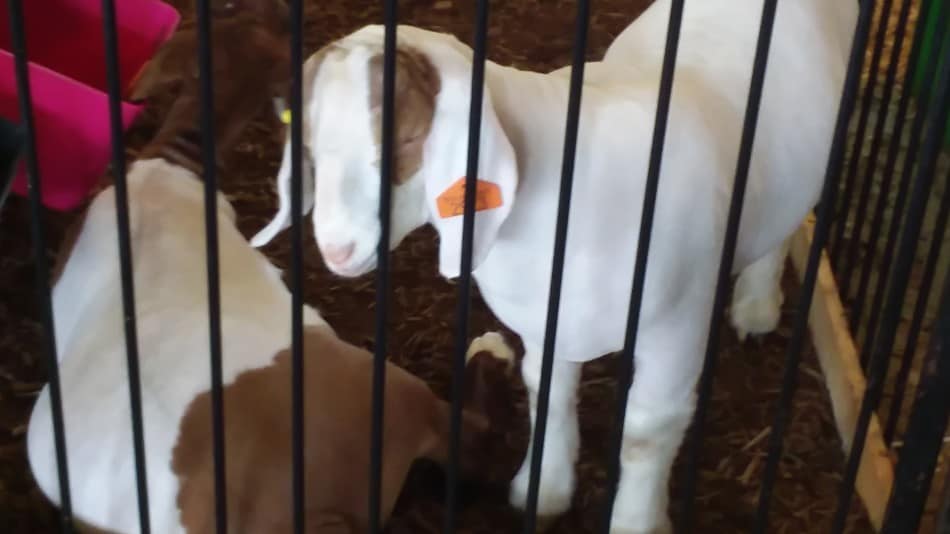
You do not have to get proven stock
You can get whatever animals you want. But proven stock will be more of a sure thing than just getting younger stock, like doelings.
The higher quality goats you choose the more likely it is that they will be productive for you but nothing is a sure thing.
If getting proven stock is not in your budget, that’s okay, just realize what you are getting is a bit less reliable.
This is true only because until you have proof all you and the breeder are doing is making your best guess. Don’t get too hung up on this one, just keep it in the back of your mind.
Anyone who buys younger stock, goats or otherwise, is taking this chance, just be aware of it.
Also, if you are thinking of getting your first goats at an auction barn, I would caution you against that.
Contact a reputable meat goat breeder
Any reputable breeder, commercial (not concerned with registration papers) producers included, will occasionally have high quality stock for sale.
These are super goats that she would love to keep but just doesn’t have the space to keep them all. These goats would be wonderful as a starter herd!
Meat And Livestock Australia has a great PDF on goat selection, if you are looking for another perspective on what goats to select and why.
Commercial meat goats are production goats
Commercial goats are production goats, not pets and not show goats.
You are buying them to “work” for you by producing babies for you to sell in return for the feed and care you are giving them.
Commercial goats would be selected for their ability to perform well when given reasonable inputs, like feed.
Pet goats are companions
Compare this to pet goats that are kept for their companionship value. Pet goats don’t need to be economical to keep, they are not kept for business reasons.
There is nothing wrong with pet goats, just be aware that they are not selected for performance.
They are generally selected for looks, which may or may not result in an economical goat.
Show goats are selected for looks
What about show goats? Nothing wrong with show goats as commercial animals if they can perform in your system.
Most animals selected for show stock (not just goats) are chosen for their structure and style that the breeder hopes will win in the show ring.
The cost to raise the show animal is not the priority.
As a commercial producer, your priority is cost.
Your goals do not align with the show goat breeder’s goals, however, I’m sure these goats would produce wonderful market kids.
But that is not the point, the commercial goat producer needs economically produced market kids. It’s possible show genetics will get you there, but it is not likely.
Start with 2-3 year old goats
Younger animals will be more affordable since the farmer has less time and money into them.
Multiple levels of selections make these goats cost more
Fully mature animals will be more money, as they should be, because the farmer has more time and money invested in an older animal.
Older animals have also “made the cut” as in made it past a series of culling points, like poor grower, more difficult to deal with than average, keeps getting beat on by peers, didn’t breed, etc.
All these culling points are important and cost the farmer more money since the goat is older and has eaten more to get to this stage.
That cost and the fact that the others made it though the culling makes the good goats worth more.
Occasionally, great older does are available
However, there comes a time when an animal stops performing to the level that the farmer needs and she has to sell a good animal.
Or she only has so much space and other goats are doing better than the older doe.
This would be a great opportunity for you, a new producer to get a wonderful animal that still has a few good years left in her if at your house she is raised in a less demanding situation.
I’m not suggesting babying her, just that a good older doe will perform better in a smaller group.
Another point to consider is that there is a reason why this older doe is still in the herd and just now being sold.
Why? Because genetically she is super and any babies you will get from her will also be super. Longevity is a big deal in livestock.
Getting older does is a great way to start.
They know what they are doing with the babies and will produce daughters that are live long productive lives as well.

Return per doe is $323-73 each
- Hay cost per year $75/head
- Kids sell for $150-200/head
- Number of kids per doe makes a huge difference in profit!
According to the best numbers we can come up with so far, feeding each goat will cost $75 in hay per winter. This is based on a $200 per ton hay price.
Goats will also need a few dewormings at $1.50 each time and a mineral block that will be for the whole group and will cost $10.
The return is going to be from selling the kids when they are weaned.
You would also have money from culls (under performing adults you sell), but we’ll leave the culls out for now since hopefully you won’t have any the first few years.
The goat kids will bring $150-200 each. This is where things can get a bit confusing.
For a more in-depth look at goat budgets, read Cost To Raise Goats.
Around here goats sell by the head (each) but in most market reports I see them listed out by the pound. If your area is by the pound you have a little more math to do, don’t worry it’s not hard.
So using these numbers we can come up with yearly costs of $77 direct costs alone.
$75 for hay, $1.50 for deworming, $0.50 for mineral block (just as a guess)
We have the income potential per doe of between $300-400 with twins and $150-200 with a single.
Best case totals: $400-77=$323 yearly return per doe
Poor performance/prices totals: $150-77=$73 yearly return per doe
Don’t forget that this is just per doe returns, not profit to the owner.
There will still be costs that need to be figured in for the buck, fencing, feeders, your time, etc. or death losses.
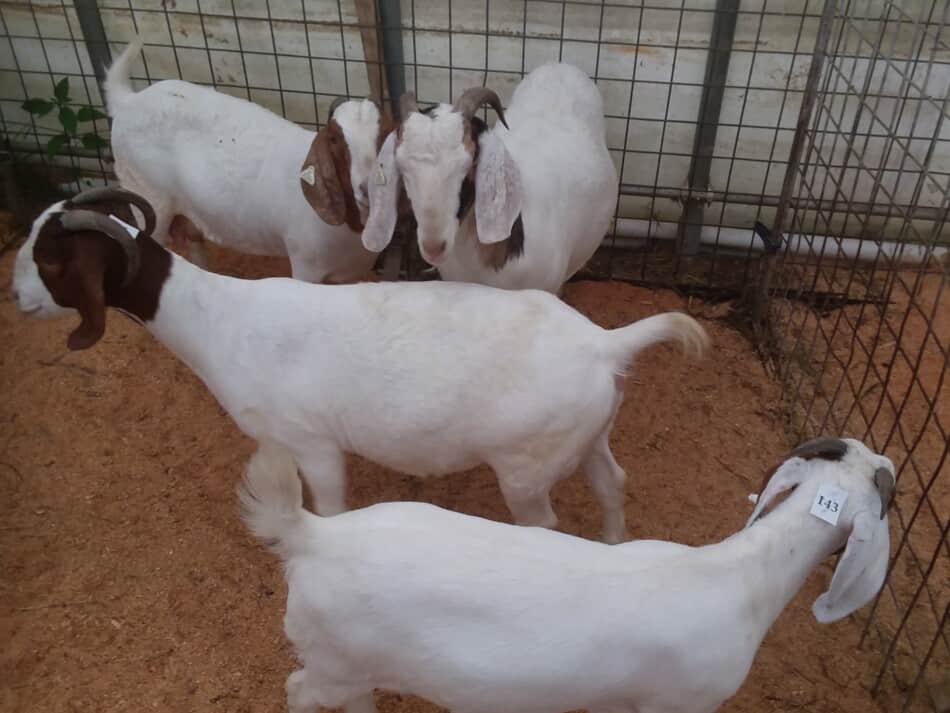
Price per doe is variable and regional
I just went to an auction yesterday to see what was consigned for a special goat sale at Danville auction, in Danville, Ohio.
It was a special sale featuring Kiko and Savanna goats so I wanted to see what would show up and how much these goats would sell for.
| Commercial doe | $300-400 each |
| Commercial doeling | $150-200 each |
| Buck | $400-500 each |
| Buckling | $250-350 each |
| Highest priced doe | $800 each |
| Highest priced buck | $1,000 each |
I saw that most good looking commercial does would bring $300-$400 and doelings (female goats under a year old) were more like $150-200.
Bucks were selling for $400-$500 with bucklings (male goats under a year old) bringing more like $250-$350.
I should mention, there were plenty of lower priced goats at the sale, but for good looking, nice goats these were the prices for the day.
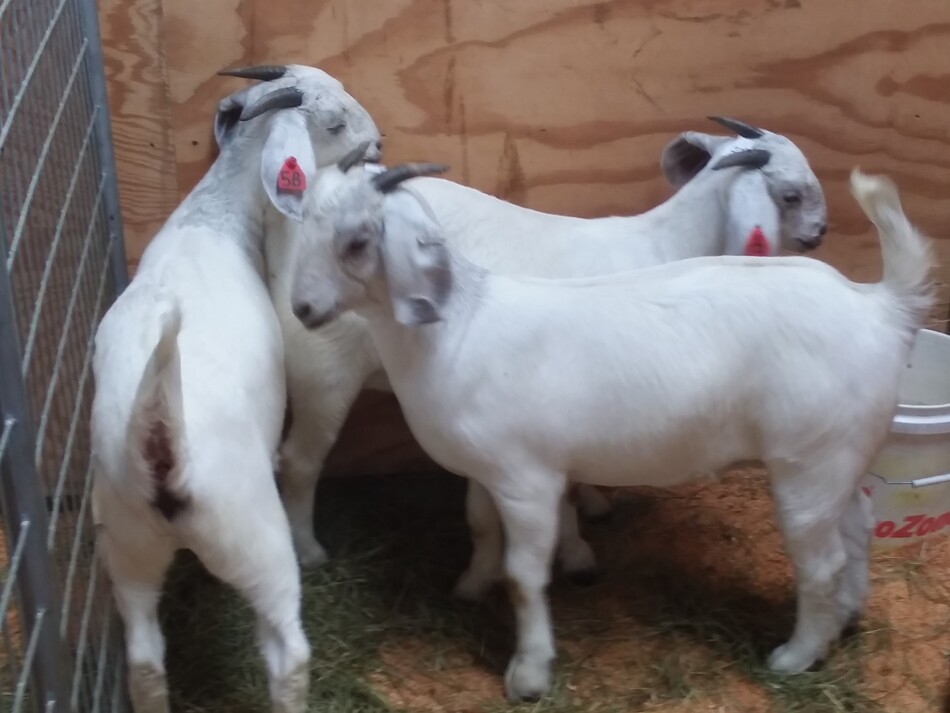
Decide how much you are willing to spend per goat
So what should you pay for your goats?
Here’s what my husband and I came up with as a way to decide if the price of the doe or buck is worth it to us.
We are looking for commercial goats to sell market kids at the auction, these are not show goats or registered goats.
Nothing wrong with either, just not something we are willing to pay extra for.
If you decide you want registered or show line goats, go for it, just be sure to figure your costs accordingly.
Our goat price formula:
Price for market kids at auction-feed costs for the year=price we are willing to pay for a commercial grade doe
Let’s put in some numbers.
We’ll put in $400 for the market kids, meaning she has twins and we sell them both at the auction and get $200 each giving $400 total.
We are guessing $75 in hay per doe per winter, pastured with sheep eating the weeds and plants the sheep are leaving will be their food for most of the year.
$400 income-$75 hay cost= $325 profit for a doe (best case numbers)
This means that we are willing to put all of the money for all of the does we would purchase into the enterprise at the beginning and get back to break even money in one year (if it all goes well, of course).
So after one year we will have earned back the money that we paid for the goat and her feed. All of the production after that is money that we keep.
Using this set of numbers we would be profiting $325 per doe, per year for every year she is in the herd (after the first year, of course!)
You must use the numbers for your area! I read an article by a lady in Arizona who said she can get a goat for around $200. I’m sure she is correct, but around here they cost more.
Interestingly enough, she also mentioned $25/goat/month feed costs for her area. Around here that would be crazy high feed costs for commercial goats! Show stock maybe, farm goats, no way!
Regional differences in price are normal, both in breeding stock prices and market kid prices. Get your local numbers so you can make a plan that will work!
Here is the site we use for current commercial prices on livestock in Ohio, Farm and Dairy Market Reports. Look around online for something similar in your area.
Before you buy goats do price research for your area
Before you get too excited about the numbers in my plan/budget realize what you are not seeing (the implied stuff).
- We are not paying ourselves a wage, we are considering our time to be without pay for the first year.
- The doe must at least give birth to and raise twins for these numbers to work. Triplets will make these numbers better, singles will tank it.
- We have to sell both the goat kids to make this budget work, Keeping back a doeling to increase the herd size will make getting to break even money take longer.
- Market prices change! This budget requires a good price for your goats at the auction, if you sell at a low price time of the year, or just a day with lower prices it will take longer to pay yourself back.
- If she costs more to feed or needs lots of other things like multiple dewormings, vet care, etc. the plan/budget is shot.
- If you can’t wait until year 2 to make money (remember year one done well is just break even) don’t put your money into this plan. Purchase something that will start bringing in money more quickly.
Current Selling Prices For Goats shows you how to find the prices in your area.
Meat goats are up and coming livestock
Choosing your first herd of goats carefully will get you started successfully into a profitable livestock enterprise. Cheaping out will come back to haunt you.
Buy the highest quality goats you can find that will perform in your area, ideally from a farm that raises their goats the way you plan to raise yours.
This will make the transition from their old home to your farm less stressful for the goats and you!
Get purebred if you want, but don’t get too hung up on papers, you want results. I love the idea of selling breeding stock!
But first things first, I need the herd to be profitable until then.
Focus on producing marketable kids and making a profit then get into breeding stock if you decide that is a good fit for your farm.
A great resource for all things goat is TennesseeMeatGoats.com, this is a link to her informational articles section. This site has the best goat information anywhere, it’s definitely worth a read.
